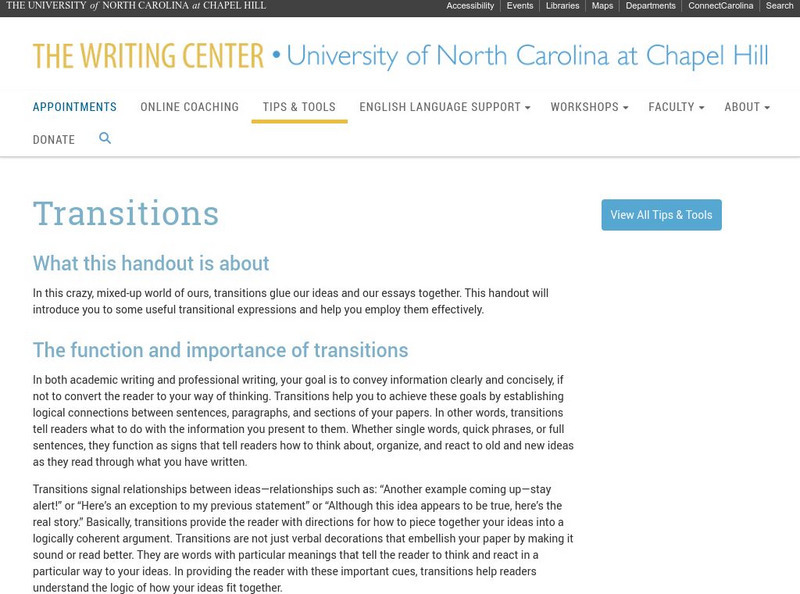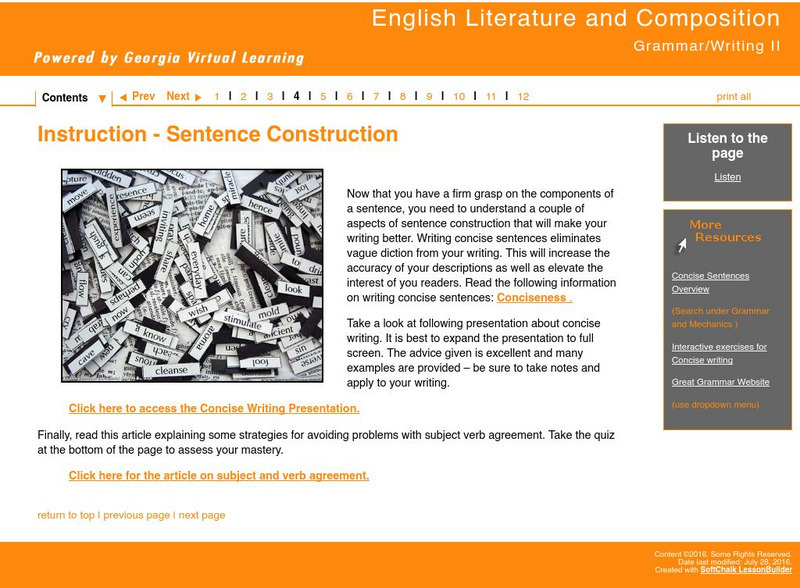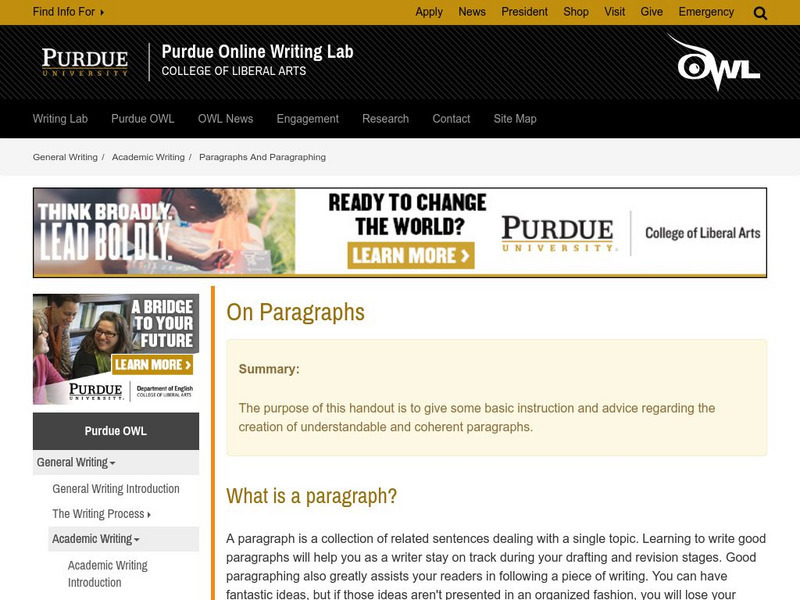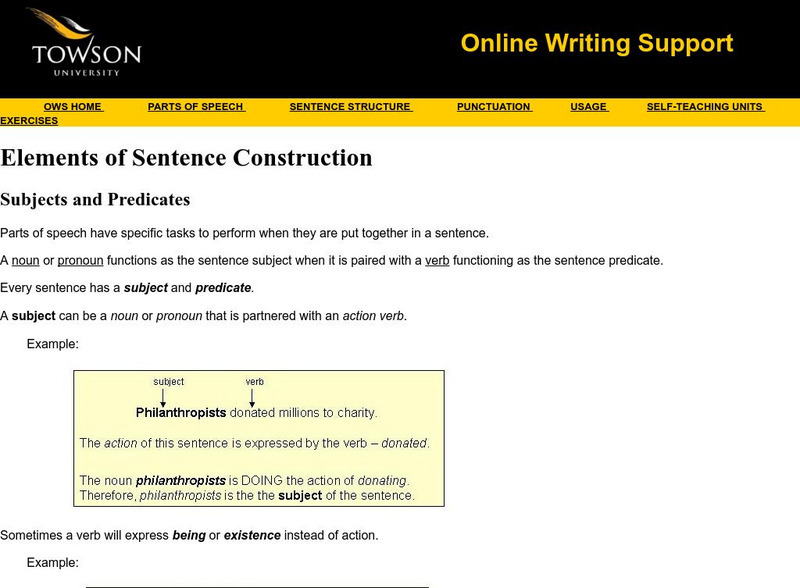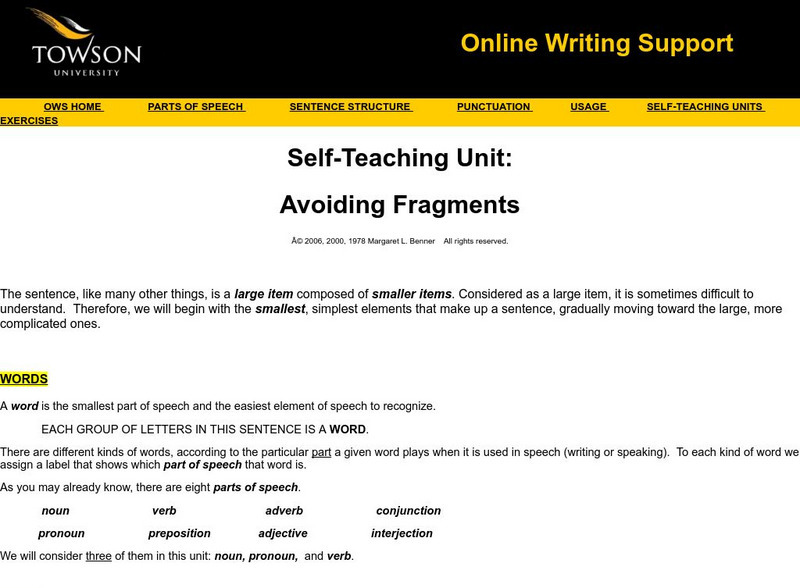National Endowment for the Humanities
Lesson 1: The First Great Awakening
High schoolers examine the First Great Awakening and how it affected religious belief in colonial America. They read and analyze primary source documents, explore various websites, and write a five-paragraph essay examining the beliefs...
Children’s Hospital of Philadelphia
Case Studies: Influenza and HIV
Stop infection spread. Pupils participate in an activity to model infections and replications of viruses. Within the activity, scholars see that viruses may end up with genetic variation and connect that to how some forms of the flu are...
Curated OER
Centers of the Storm: The Lyceum and the Circle at the University of Mississippi
Greek Revival architecture and the Civil Rights Movement? Sure! Examine how the Lyceum and Circle, two historic buildings located on the campus of the University of Mississippi, relate to integration and the 1962 riot on the university...
National Endowment for the Humanities
Slavery and the American Founding: The "Inconsistency Not to Be Excused"
High schoolers examine slavery in the revolutionary and colonial eras of the United States. In this slavery lesson, students investigate the presence of slavery in early America, the language of the Constitution, and the intent of the...
National Endowment for the Humanities
Lesson 3: Religion and the Fight for American Independence
Pupils explore the role religion played in the American Revolutionary War. Using primary documents and writing exercises, students understand how religion was used in support of the war efforts and how specific religious groups responded...
National Endowment for the Humanities
Lesson 2: The Debate in Congress on the Sedition Act
Pupils research and discuss the provisions in the Constitution that supported the arguments for and against the Sedition Act. They articulate objections to and arguments in favor of the Sedition Act.
University of North Carolina
University of North Carolina: Writing Transitions
This University of North Carolina writing tutorial gives examples and how to use transitions and stresses the importance of organization. W.9-10.1c cohesion/clarity/reason, W.9-10.2c cohesion/clarity/trans, W.11-12.1c...
Georgia Department of Education
Ga Virtual Learning: Contemporary Prose: Strengthening Sentences
This lesson focuses on strenthening sentences in compositions by combining sentences, varying sentence length, using active voice, and using parallel construction. It provides examples and a practice exercise.
Georgia Department of Education
Ga Virtual Learning: Grammar/writing Ii: Instruction: Sentence Construction
This lesson from a grammar and writing unit focuses on sentence construction including writing clear, concise sentences useing the correct subject-verb agreement. It features links to The Writer's Handbook: Clear, Concise, Sentences,...
Sophia Learning
Sophia: Outlines
This lesson focuses on outlining; it defines outlining and the two types, topic and sentence. It provides two slideshows: the first focuses on creating the outline including the 4 steps, structure, and importance of flexibility; the...
Sophia Learning
Sophia: Writing Effective Topic Sentences
This tutorial focuses on topic sentences using two slideshows. The first defines topic sentences, discusses purpose and placement, and provides a sample thesis statement followed by accompanying topic sentences samples. The second...
Harvard University
Harvard University: Strategies for Essay Writing
This website provides a series of links to detailed information about each segment of how to write an academic essay from how to read the assignment to the final edits. Use the links to the right. W.9-10.1a claims/intro/org, W.9-10.2a...
Texas Education Agency
Texas Gateway: Editing for Coherence and Transition
In this lesson, students will learn how to edit sentences so they move seamlessly from one to another within a paragraph; however, they can use the same methods to ensure that paragraphs move seamlessly from one to another in an entire...
Texas Education Agency
Texas Gateway: Effective Introduction, Conclusion, and Sentence Variety
[Accessible by TX Educators. Free Registration/Login Required] This lesson focuses on writing effective introductions and conclusions and tying them together. It also discusses varying sentence structures. Practice exercises are...
Online Writing Lab at Purdue University
Purdue University Owl: On Paragraphs
A comprehensive approach to writing coherent paragraphs and knowing how to transition between paragraphs.
Joe Landsberger
Study Guides & Strategies: Writing Basics
This site by University of St. Thomas focuses on the basics for writing any paragraph. It is developed in outline fashion and is very easy to follow. This site provides a basic overview of the process of writing without going into a...
Towson University
Towson University: Online Writing Support: Elements of Sentence Construction
This entry focuses on the Elements of Sentence Construction including subjects and predicates, phrases and clauses, compound sentence elements, and avoiding fragments, run-ons, and fused sentences.
Towson University
Towson University:online Writing Support: Self Teaching Unit: Avoiding Fragments
This module focuses on what makes a sentence including parts of speech, subjects and predicates, and phrases and clauses. It then explains fragments and how to avoid them. It offers links to several exercises and a post-quiz.
The Write Place
Literacy Education Online: Logical Fallacies
This site from the St. Cloud State University provides many links in this index with general writing help. Under "Development" you'll find "Sensory Details." Under "Logical Fallicies" you'll find a link by the same name. Look under...
Other
Roane State Community College: Online Writing Lab (Owl): Creating Outlines
Outlining isn't always an A-B-C, 1-2-3 exercise. Try this more informal system of outlining to organize your paragraphs and entire paper. This page also discusses writing introductions and conclusions.
Grammarly
Grammarly Handbook: Transitions and Transitional Devices
This Grammarly Handbook resource provides information about how to use transition words and transitional devices to connect sentences, paragraphs, and sections in an essay.
Other
Sjrc Writing Center: Parallel Structure Lesson
This site explains the topic of parallel structure. Numerous examples of sentences with parallel structure are provided.
Grammarly
Grammarly Handbook: Untangle Grammatical Structures
This page explains the need to revise sentences with unclear or mixed constructions and provides examples.
Other
Glendale College: Structure of the Five Paragraph Essay
This website from the Glendale Community College shows the structure of five paragraph essays and the elements within the paragraphs (motivator, thesis sentence, topic sentence, specific support, reworded thesis, clincher). Gives...








